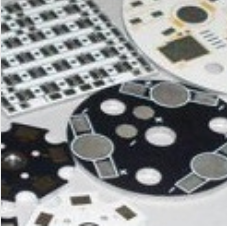As an important electronic connector, PCB circuit boards are used in almost all electronic products and are considered the "mother of electronic system products." Its technological changes and market trends have become the focus of many operators.
Electronic products are currently showing two obvious trends, one is light and short, the other is high-speed and high-frequency, corresponding to drive downstream PCB to high density, high integration, packaging, subtle differences and multi-level development direction, the demand for high-level boards and HDI is increasing.
Submit high-level board wiring length, low circuit impedance, high-frequency and high-speed operation, stable performance, can undertake more complex functions, electronic technology with high-speed, high-frequency, multi-function and large-capacity development is an inevitable trend.

In particular, the in-depth application of large-scale integrated circuits will further promote the development of high-precision and high-strength PCBs. Currently, PCBs with less than 8 layers are mainly used in household appliances, PCS, desktops and other electronic products, while high-performance multi-channel servers, aerospace and other high-end applications require more than 10 PCB layers.
Take the server as an example. In one-way, two-way server PCB boards are generally between 4-8 layers, while high-end server boards such as 4 and 8 require more than 16 layers, and the backplane requires more than 20 layers.
High-performance copper cladding has gradually become a trend. The rapid development of the electronics industry has also brought pollution problems caused by waste of electronic products.
Research experiments have shown that electronic products containing halogen compounds or resins as flame retardants (including printed circuit board substrates) produce harmful substances during waste incineration. At the same time, with the downstream demand growth and differentiation of PCB circuit boards, the rapid development of automotive electronics, LEDs and other fast-developing fields have put forward special requirements for copper-clad materials.
The demand for high-performance special copper cladding such as halogen-free, lead-free, high Tg (glass transition temperature), high frequency, and high thermal conductivity is increasing: environmental protection materials are developing rapidly. With the awakening of national environmental protection awareness, environmental protection reviews have become more and more stringent, and laws and regulations restricting the use of halogens on printing plates have been issued all over the world. Since the beginning of 2008, under the promotion of the halogen-free program of international major factories, the electronics industry has called for the halogen-free call to be stronger. Greenpeace will launch a new green electronic product ranking every quarter, Sony, Toshiba, Nokia, Apple and many other electronics giants The demand for halogen-free boards is becoming stronger and stronger.
According to Prismark's estimation, the compound growth rate of halogen-free FR4 board will be the highest in 2011-2016, which will reach 21.5%. R & environmental protection material D has become an important work in the CCL industry. The rapid development of LEDs has made high thermal conductivity copper cladding a hot spot.
Small-pitch LEDs have the advantages of seamless integration, good display effects, and long service life. In recent years, they have begun to penetrate and grow rapidly. Correspondingly, their demand for high thermal conductivity copper plates has also become a hot spot. Automotive PCBs have very strict requirements on product quality and reliability, and more use special energy materials to coat copper. Automotive electronics is an important downstream application of PCBs. Automotive electronic products must first meet the characteristics of automobiles. As a means of transportation, they have higher requirements for adaptability to temperature, climate, voltage fluctuations, electromagnetic interference, vibration, etc. This puts higher requirements on automotive PCB materials and uses more special energy sources. Materials (such as high Tg materials, CAF (compressed asbestos fiber) materials, thick copper materials and ceramic materials, etc.) PCB multilayer copper cladding.